Quebec, with its rich cultural heritage and diverse architectural history, has witnessed a fascinating evolution of wall coverings. From the simple natural materials used by the early inhabitants to sophisticated contemporary designs, wall coverings in Quebec have constantly evolved to reflect the trends, technologies, and needs of each era. In this blog, we will explore this evolution, highlighting the materials and styles that have defined each period.

The early influences: Natural materials
The early inhabitants of Quebec, the Indigenous peoples, primarily used natural materials for their dwellings. The walls were often constructed from wood, stone, and earth, with coverings of bark or hides for insulation. These locally available materials provided protection against the harsh Quebec climate.
With the arrival of European settlers in the 17th century, construction techniques evolved. French-style houses utilized timber framing filled with wattle and daub (a mixture of mud and straw), while stone houses were also common in areas where stone was plentiful.
The 19th century: Industrialization and new materials
The industrialization of the 19th century marked a turning point in the evolution of wall coverings. With the construction of railways and the rise of the forestry industry, wood became more accessible and affordable. Wooden houses with horizontal or vertical siding boards became common. Wood was often painted to protect the boards from the weather and to add an aesthetic touch.

Towards the end of the 19th century, wallpaper also gained popularity. Imported from Europe, wallpaper became a symbol of status and modernity. Floral and geometric patterns were highly sought after, adding a touch of elegance and refinement to Quebec interiors.
The 20th century: Modernity and innovation
During the 20th century, there was an explosion of diversity in wall covering materials and styles. In the 1920s and 1930s, stucco gained popularity, especially for Art Deco and Mediterranean-style homes. Stucco, applied over wooden laths, provided a unique texture and durability.

After World War II, drywall revolutionized residential and commercial construction. Easy to install and cost-effective, gypsum panels quickly replaced traditional lath and plaster walls. The 1960s and 1970s saw the introduction of pressed wood panels and vinyl coverings, offering affordable and low-maintenance alternatives.

The 21st century: Return to roots and technological innovations
In the 21st century, there has been a return to natural and sustainable materials, driven by environmental awareness. Wood, stone, and brick coverings, often reclaimed or recycled, have regained popularity. Vertical slat panels with angled cuts, for example, blend modern aesthetics with the authenticity of natural wood, creating warm and dynamic spaces.

At the same time, technological innovations have introduced new materials such as composite panels and polymer coatings that mimic the appearance of wood or stone while providing increased durability and weather resistance.
Conclusion
The evolution of wall coverings in Quebec not only reflects technological and economic changes but also the cultural and aesthetic aspirations of its inhabitants. From the simplicity of natural materials to contemporary innovations, each period has left its unique mark on Quebecois home walls. At Vertika Design, we take pride in continuing this tradition by offering wall covering solutions that blend beauty, durability, and modernity, creating interiors that tell a story.

